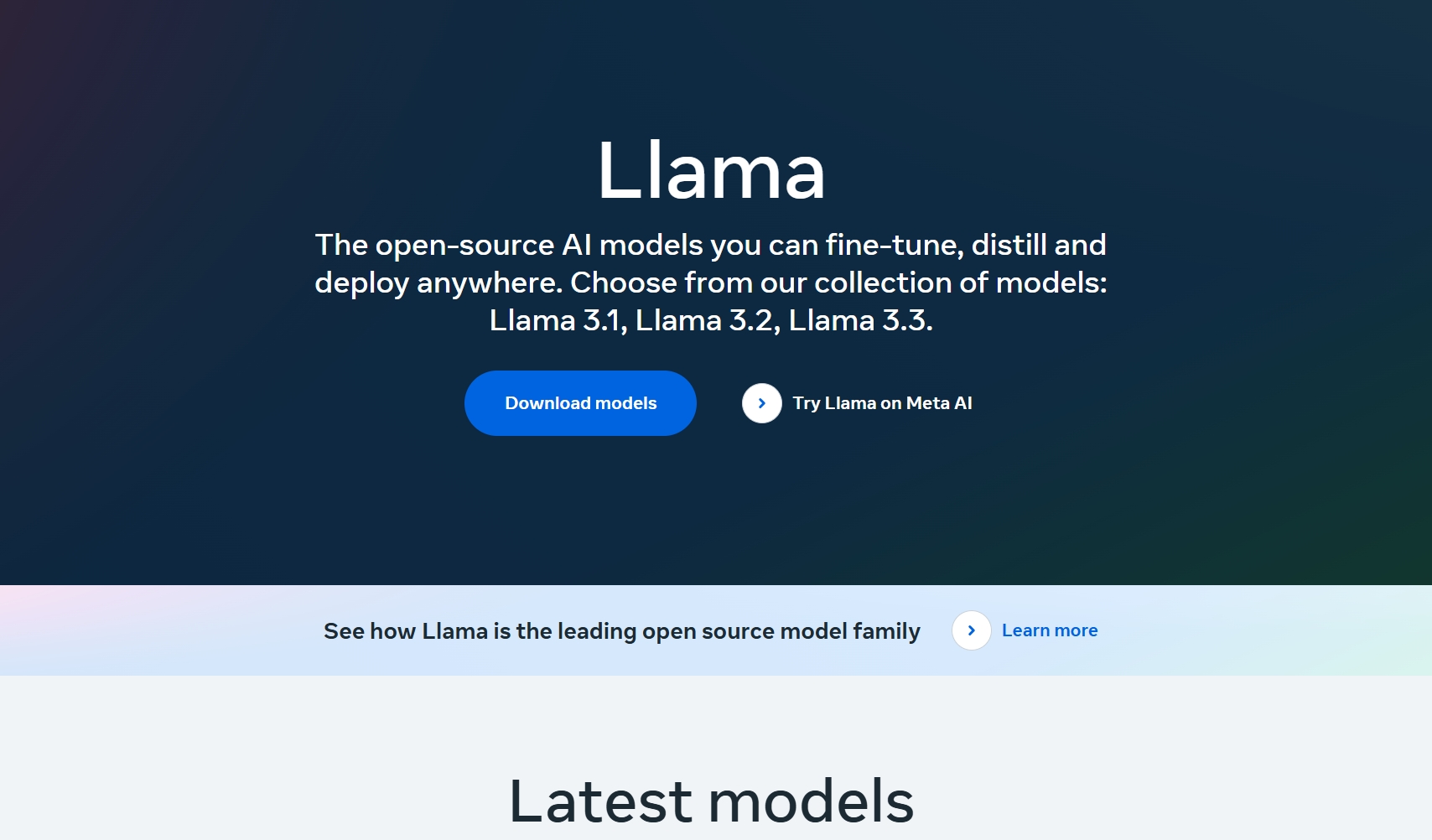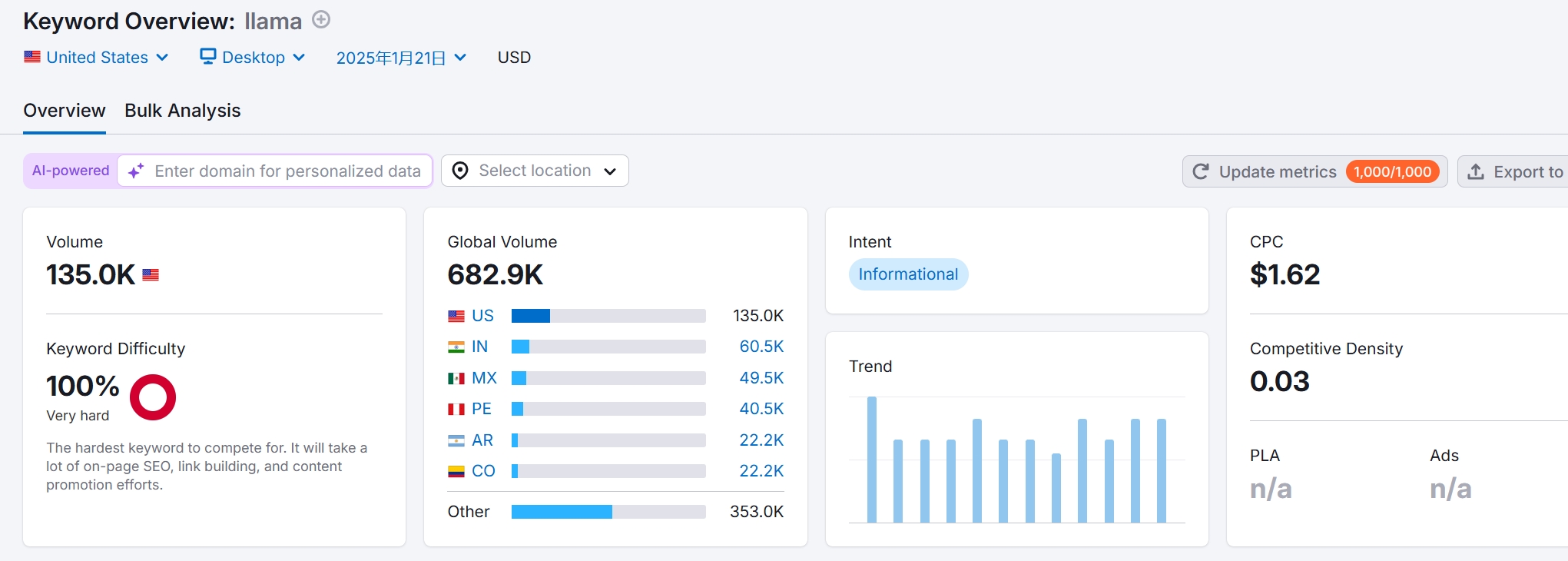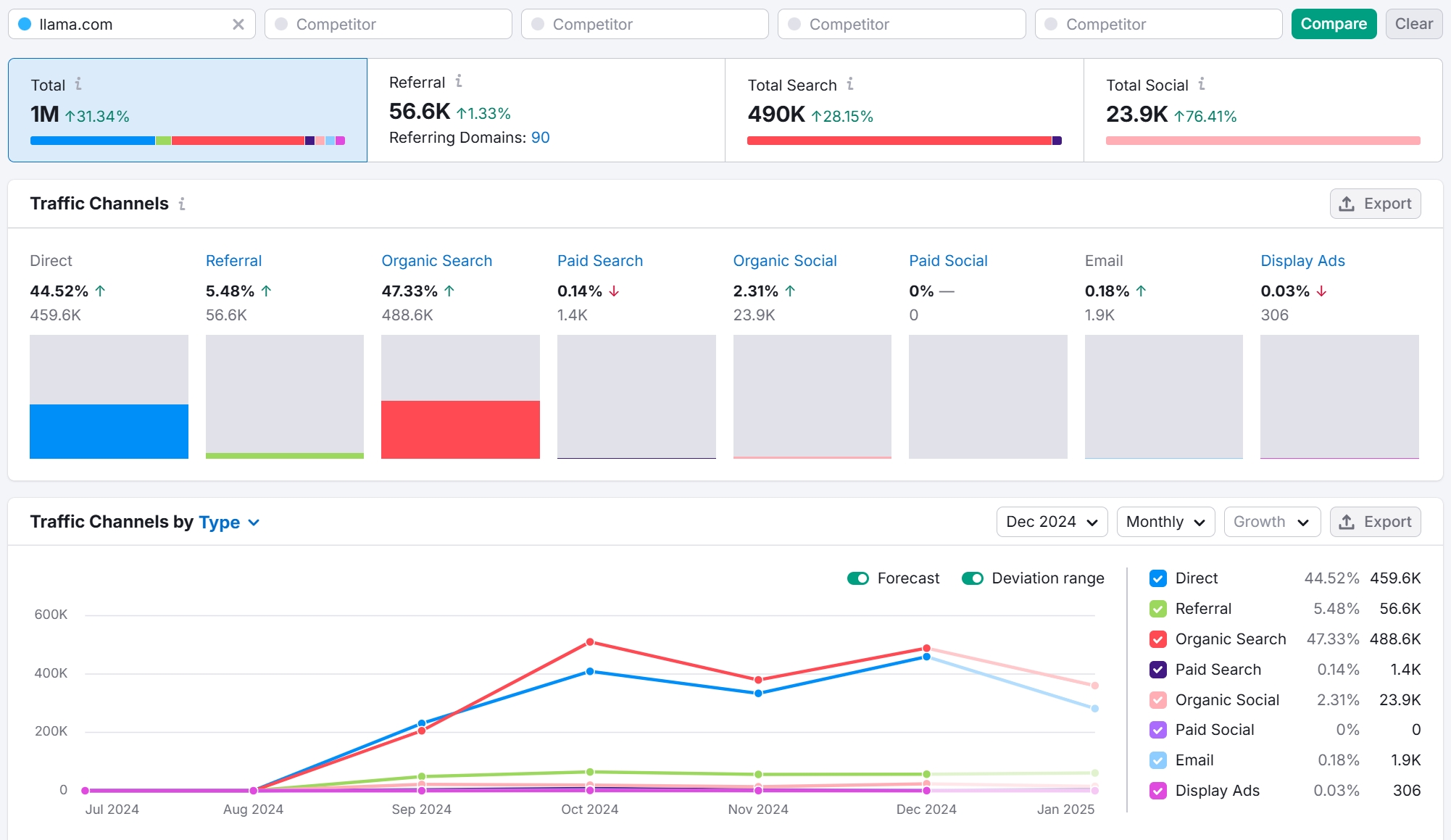
LLaMA – A large-scale language model developed by Meta
LLaMA (Large Language Model Meta AI) is a large language model developed by Meta (formerly Facebook) focused on providing researchers and developers with powerful natural language processing (NLP) capabilities.As one of the open source AI models, LLaMA provides efficient text generation, natural language understanding, and Q&A capabilities, supporting a wide range of scenarios from small applications to complex systems.
LLaMA Overview
LLaMA (Large Language Model Meta AI) is a large language model developed by Meta (formerly Facebook) focused on providing researchers and developers with powerful natural language processing (NLP) capabilities.As one of the open source AI models, LLaMA provides efficient text generation, natural language understanding, and Q&A capabilities, supporting a wide range of scenarios from small applications to complex systems.It is Meta's focus on the current field of AI language modeling, aiming to provide a flexible and scalable solution for the research and development community.

LLaMA Core Features
- Powerful Text Generation
LLaMA is capable of generating high-quality continuous text based on user input for a wide range of scenarios, including creative writing, content generation, and smart chat, ensuring semantic coherence and fluency. - Natural Language Understanding (NLU)
Through efficient semantic analysis, LLaMA understands the complex linguistic structure of user input, providing accurate semantic parsing and contextual understanding. - Question-Answering
LLaMA supports context-based answer generation, which enables knowledge answering in a variety of domains, such as education, science and technology, and healthcare. - Open Source & Customization
LLaMA is open source, allowing developers to develop and optimize according to specific needs, which is suitable for research and enterprise project customization. - Multilingual Capabilities
has built-in multilingual support, allowing users to generate text or process language in multiple languages to meet globalization scenarios. - Resource Efficiency
Compared with other large-scale language models, LLaMA is optimized in terms of computational resources and reduced hardware requirements, making it more suitable for small and medium-sized enterprises and research teams.
LLaMA Advantages
- Open Source Ecology
LLaMA is fully open source, allowing developers to freely access its code and models and personalize them according to their needs. - High Flexibility
supports the development and experimentation of a wide range of scenarios, including natural language generation, translation, and sentiment analysis, with a wide range of applications. - Low computational cost
LLaMA optimizes the model architecture to require less computational resources for running and training compared to similar large-scale language models. - Strong Community Support
Due to its open source nature, LLaMA has attracted the attention and contributions of researchers and developers from around the world, forming an active developer community. - Integration with the Meta ecosystem
LLaMA can be seamlessly integrated into other Meta products and services to provide users with comprehensive application support.
Who LLaMA is for
- AI researchers: users who need a flexible and efficient large-scale language model for academic research.
- Enterprise developers: who want to develop intelligent applications based on language models, such as chatbots or intelligent customer service.
- Educational and training institutions: need language analysis and generation tools to aid teaching or build interactive learning platforms.
- Content creators: Utilizing LLaMA's text generation capabilities to support and inspire the creation of content (e.g., articles, stories).
- Freelancers and SMEs: Looking for an affordable NLP solution for scenarios such as marketing, customer support or user analytics.
User Reviews
- David
"The open source nature of LLaMA has allowed me to fully understand and optimize the model, and I've used it to develop a custom language analysis tool for an academic research project with great results!" - Sarah
"Compared to some of the larger models that are closed source, LLaMA has smaller resource requirements and runs efficiently, which makes it really friendly for our small team." - Mark
"Multi-language support is one of the highlights of LLaMA, I used it to develop a multi-language customer support system for a multinational client and it was very useful!"
FAQ
- Is LLaMA completely open source?
Yes, LLaMA is open source and users have free access to its code and models, subject to Meta's usage agreement. - What languages are supported?
LLaMA supports multiple language processing capabilities, depending on the version of the model being deployed. - Does it require high performance hardware?
Compared to other large-scale language models, LLaMA has lower hardware requirements, but still requires some GPU resources for training large-scale models. - Can LLaMA be used commercially?
Commercial use is subject to Meta's license agreement, and it is recommended that you familiarize yourself with the licensing and restrictions before use.
Other recommended tools like LLaMA
- GPT-4 (OpenAI)
Powerful multifunctional language model, suitable for a variety of intelligent application scenarios, but you need to pay to use it. - BERT (Google)
model designed for natural language understanding, suitable for semantic analysis and text classification and other tasks. - T5 (Text-to-Text Transfer Transformer)
A unified text processing model developed by Google that supports a variety of tasks such as translation, summarization, and Q&A. - Hugging Face Transformers
provides a variety of pre-trained language models and NLP toolkits, with active developer community support. - Bloom
Open source large-scale multilingual model developed in collaboration with multiple research institutions to support globalized language generation and processing needs.
LLaMA Brand Term Search Volume Trends
According to SEMrush, searches for "LLaMA" have risen rapidly since its launch, showing significant interest especially in the AI research and development space.As Meta continues to release updated and optimized versions, searches continue to grow.

LLaMA Website Traffic Trends
Traffic to LLaMA's official website or related platforms, as analyzed by SEMrush data, is primarily concentrated in North America and Europe, with research institutions and the developer community as the core user base.Traffic sources are mainly organic searches and citations from academic papers, while exposure in industry conferences and forums also brings additional visits.

Jan.ai is an advanced artificial intelligence platform focused on providing automated customer service solutions.By using machine learning and natural language processing technologies, the platform is able to simulate human customer service in order to automatically answer user queries, solve problems, and provide efficient customer service.Jan.ai is applicable to a variety of industries, including e-commerce, finance, education, etc., and helps companies reduce costs and improve customer satisfaction.